With VRAY's XRF Gold Testing Machines, you gain access to advanced, non-destructive analytical solutions, crafted with 17 years of expertise to meet the highest industry standards. Our comprehensive product line delivers unparalleled accuracy and efficiency for all your precious metal analysis needs.
Our XRF Gold Testing Machine series is designed with distinct capabilities to suit various professional requirements:
A robust, all-in-one desktop solution priced at $10,000-$11,000. It offers 0.05% accuracy for 9999 gold with a customized Si-Pin detector. Capable of testing solid, liquid, and powder samples in just 40 seconds, it features an inbuilt Intel i5 3320M computer and a broad element range from K(19) to U(92). Its 50W micro-focused X-ray tube ensures reliable performance.
This mini desktop model, available for $12,000-$14,000, provides 0.03% accuracy for 9999 gold in just 30 seconds. Also utilizing a customized Si-Pin detector, it's perfect for all sample types. The VR-S6 includes an advanced i5-1035G7 Windows 11 inbuilt computer and an 11.6" touchscreen, offering a modern, intuitive user experience.
Our premier desktop gold tester, priced at $20,000-$22,000, sets the benchmark for precision with 0.01% accuracy for 9999 gold. Featuring a high-sensitivity SDD detector, it delivers results in a lightning-fast 30 seconds. The VR-T7 boasts a 5-megapixel CMOS color camera with 40x-160x magnification and a manual XY sample platform (50x50mm range) for pinpoint analysis. Its beryllium window X-ray tube enhances performance.
All VRAY XRF machines come equipped with a dedicated T-shaped radiator for superior heat dissipation, ensuring continuous operation without cooling waits. They provide precise, non-destructive analysis crucial for fraud prevention, accurate valuation, and stringent quality control across various industries, from jewelry to recycling.
XRF stands for X-ray Fluorescence. It is a non-destructive analytical technique used to determine the elemental composition of various materials, including metals, liquids, and powders. The core principle involves firing high-energy primary X-rays at a sample. When these X-rays interact with the atoms in the sample, they knock out inner-shell electrons. To stabilize, outer-shell electrons fall into the vacant spots, releasing excess energy in the form of secondary, or "fluorescent," X-rays. Each element emits X-rays at a unique, characteristic energy, creating a distinctive "fingerprint." An XRF machine then detects and measures these fluorescent X-rays to identify the elements present and quantify their concentrations.
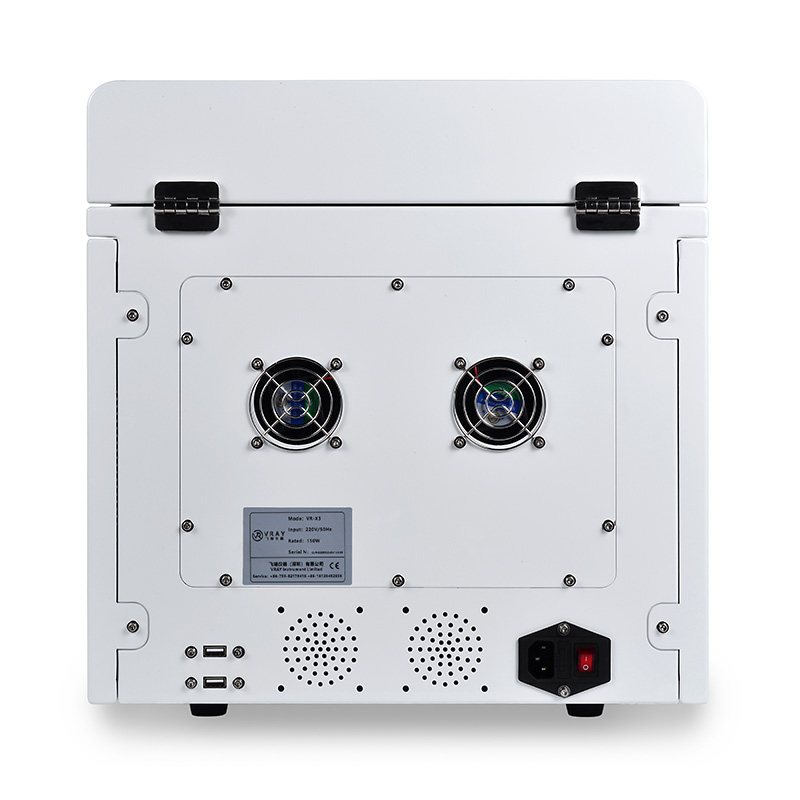
XRF technology offers significant advantages that make it the preferred method for gold testing:
Non-Destructive Analysis: This is perhaps the most crucial advantage for gold testing. Unlike traditional methods like acid tests or fire assay which can damage or consume the sample, XRF leaves the gold item completely intact. This is vital for valuable jewelry, coins, and artifacts, preserving their integrity and market value.
Speed and Efficiency: XRF provides rapid results, typically within seconds (e.g., VRAY machines offer 30-50 second test times). This allows for real-time decision-making, significantly boosting efficiency in high-volume environments like pawn shops, jewelry stores, and recycling centers.
High Accuracy and Precision: XRF machines offer excellent accuracy in determining gold purity (e.g., VRAY models achieve accuracies from 0.1% to 0.01% for 9999 gold). They can precisely quantify gold content and identify alloying elements (like copper, silver, nickel) and even trace impurities.
Multi-Element Analysis: Beyond just gold, XRF can simultaneously detect and quantify various other elements, including silver, platinum, palladium, and base metals. This provides a comprehensive compositional breakdown, crucial for understanding alloys and detecting non-gold components.
Ease of Use: Modern XRF gold testers are designed to be user-friendly, often featuring intuitive touchscreen interfaces and minimal sample preparation. This makes them accessible to a wide range of operators with minimal specialized training.
Versatility: XRF technology can analyze gold in various forms – solids (jewelry, coins, bullion), liquids (plating solutions), and powders (ore samples, filings), catering to diverse industry needs.
Reliability and Repeatability: The automated nature of XRF testing reduces human error, providing consistent and repeatable results, which builds trust with customers and ensures accurate business transactions.
Fraud Detection: Its ability to quickly and accurately identify exact compositions helps in identifying gold-plated items or counterfeit products that might superficially appear as solid gold.
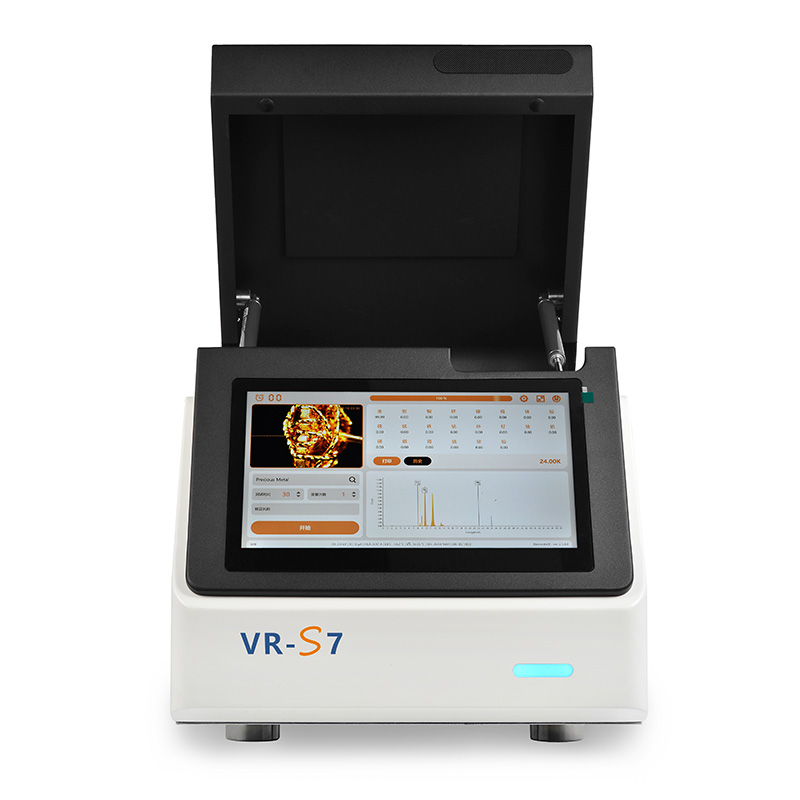
Using an XRF gold testing machine generally involves a few straightforward steps:
Power On: Ensure the machine is plugged into a stable power source (preferably with a UPS) and turned on. Allow it to complete its self-test or warm-up cycle, if applicable.
Calibration: For optimal accuracy, perform a daily or routine calibration using certified reference materials, as per the manufacturer's guidelines.
Sample Prep: Clean the gold item thoroughly to remove any dirt, oils, or residues that might interfere with the X-ray beam. Ensure the surface is as flat as possible.
For desktop models, carefully place the gold item inside the machine's test chamber, ensuring it lies flat and covers the X-ray window area. Use any provided sample holders for irregularly shaped items.
For handheld models, firmly press the test window directly against the sample's surface.
Navigate the machine's interface (often a touchscreen) to select the appropriate test mode for gold analysis (e.g., specific karatage mode, precious metals mode).
Close the chamber door (for desktop units) or ensure proper contact (for handheld units), then press the "Test" or "Analyze" button to begin the X-ray scan.
The machine will typically operate for a short duration (e.g., 30-60 seconds). During this time, the X-ray beam is active.
Once the scan is complete, the machine will display the results, showing the precise percentages of gold, silver, copper, and any other detected elements, along with the calculated karatage (e.g., 18K, 24K).
Save the test results to the machine's internal memory or transfer them to a computer via USB, Bluetooth, or network connection for record-keeping, analysis, or printing.
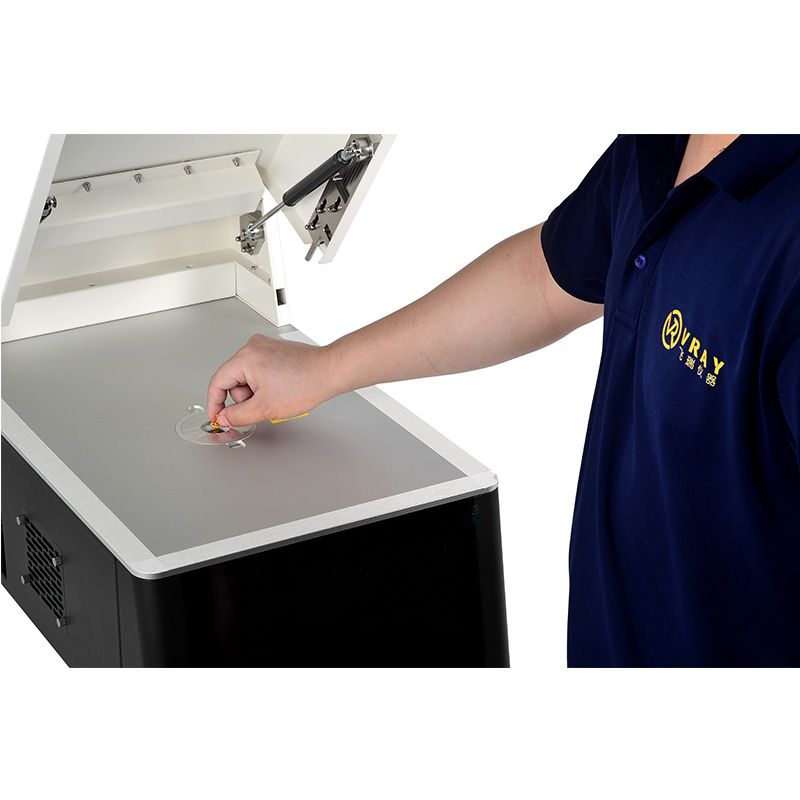
Proper care and maintenance are crucial for maximizing the lifespan and accuracy of your XRF gold testing machine.
Temperature & Humidity: Operate and store the machine in a clean, dust-free environment with stable temperatures (typically 10℃–35℃) and controlled humidity. Avoid direct sunlight, extreme heat/cold, or sudden temperature changes.
Power Supply: Use a dedicated power line with proper grounding. Consider an Uninterruptible Power Supply (UPS) and/or an isolation transformer to ensure a stable voltage supply and protect against power surges, fluctuations, and outages.
Routinely wipe down the exterior of the machine with a soft, dry cloth.
Keep the sample chamber clean and free of dust or debris. Follow manufacturer instructions for cleaning sensitive internal components or the detector window (often protected by a thin film that may need careful replacement).
Always follow the manufacturer's operational guidelines precisely.
Avoid rough handling, impacts, or vibrations that could damage delicate internal components like the X-ray tube or detector.
Ensure samples are correctly placed and secured in the chamber or at the testing window to prevent movement during analysis.
Adhere strictly to the manufacturer's recommended calibration schedule. Calibration ensures continued accuracy over time.
Arrange for preventative maintenance by qualified, certified technicians (ideally from the manufacturer or an authorized service provider). They can perform routine inspections, check components for wear, address minor issues before they escalate, and update software/firmware.
Avoid frequent short power cycles (turning it off and on rapidly) if the machine allows for extended idle times, as this can wear down the X-ray tube filament. If unsure, consult your machine's manual.
When not in use, ensure the machine is stored in a secure, designated area, protected from unauthorized access or environmental hazards.
By implementing these practices, you can significantly extend the operational life, maintain the accuracy, and ensure the reliability of your valuable XRF gold testing machine.
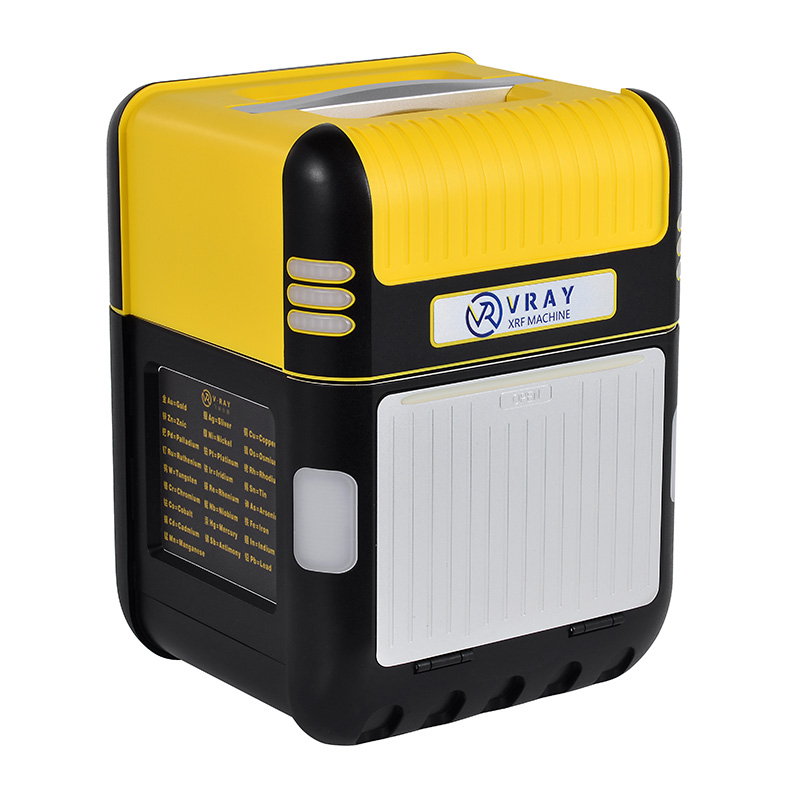
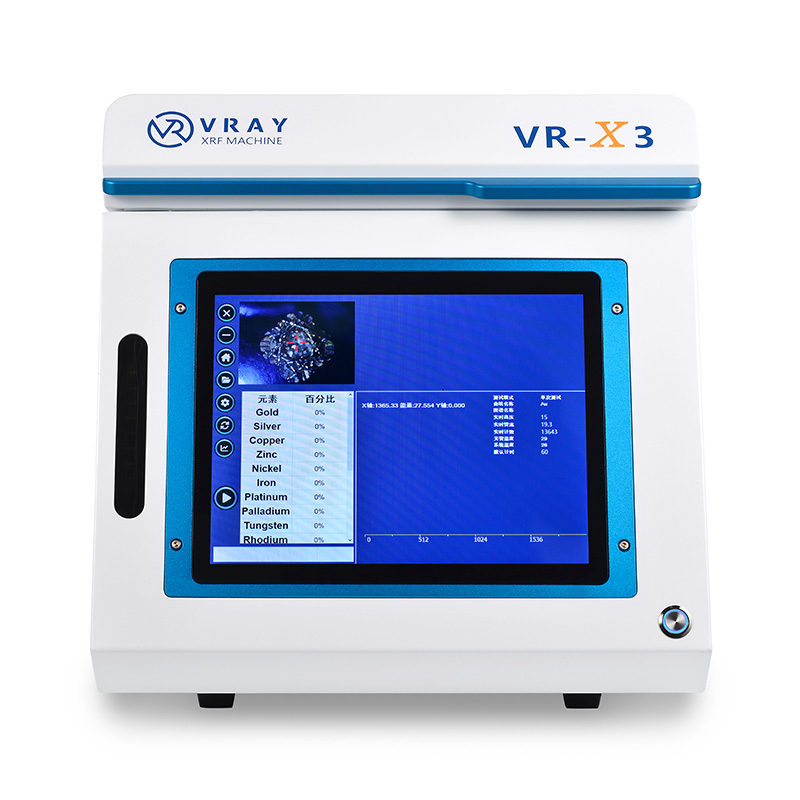
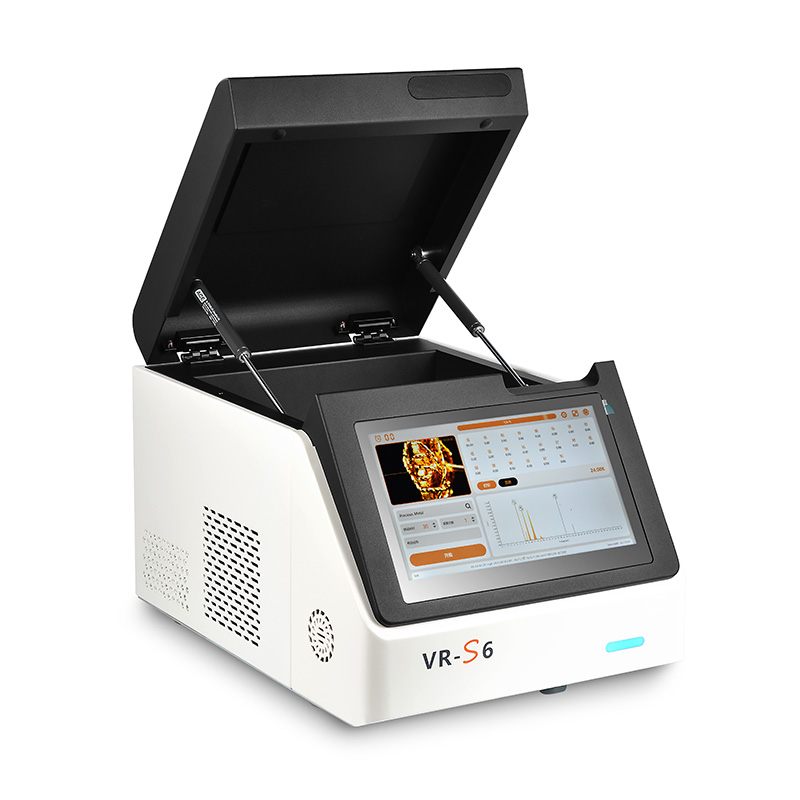
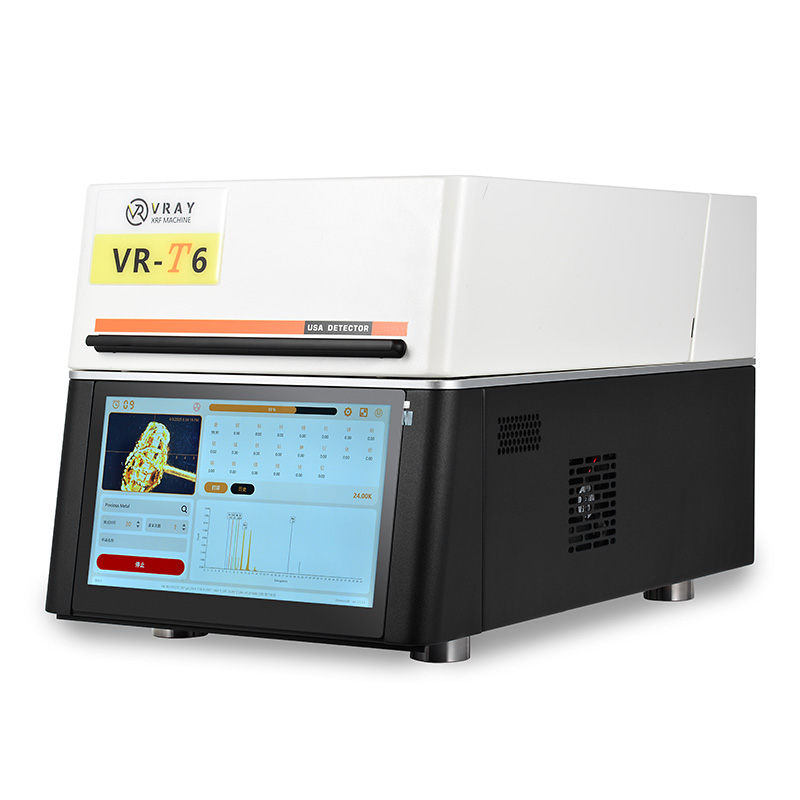
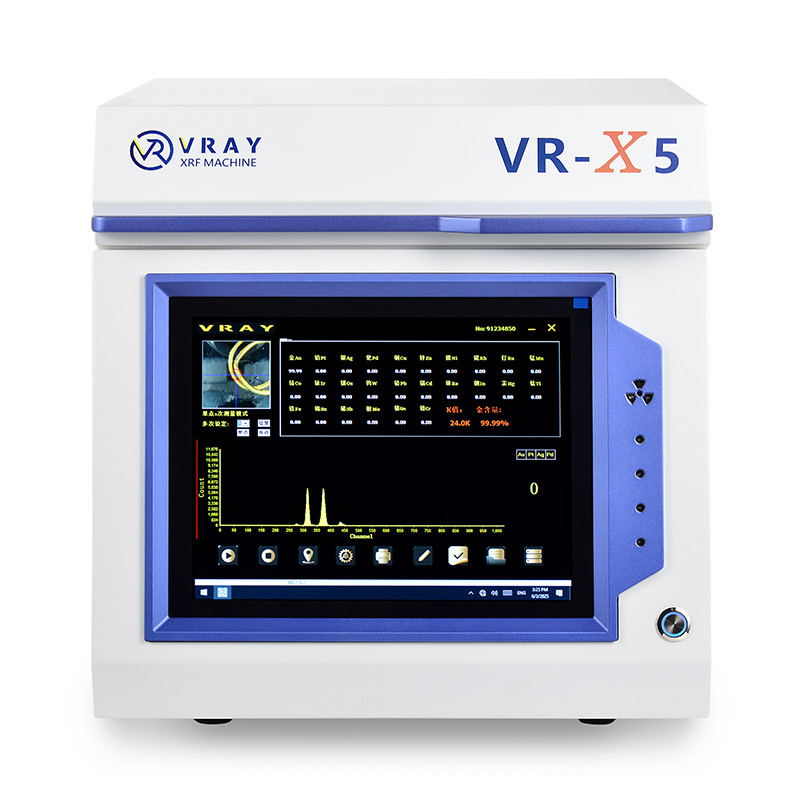
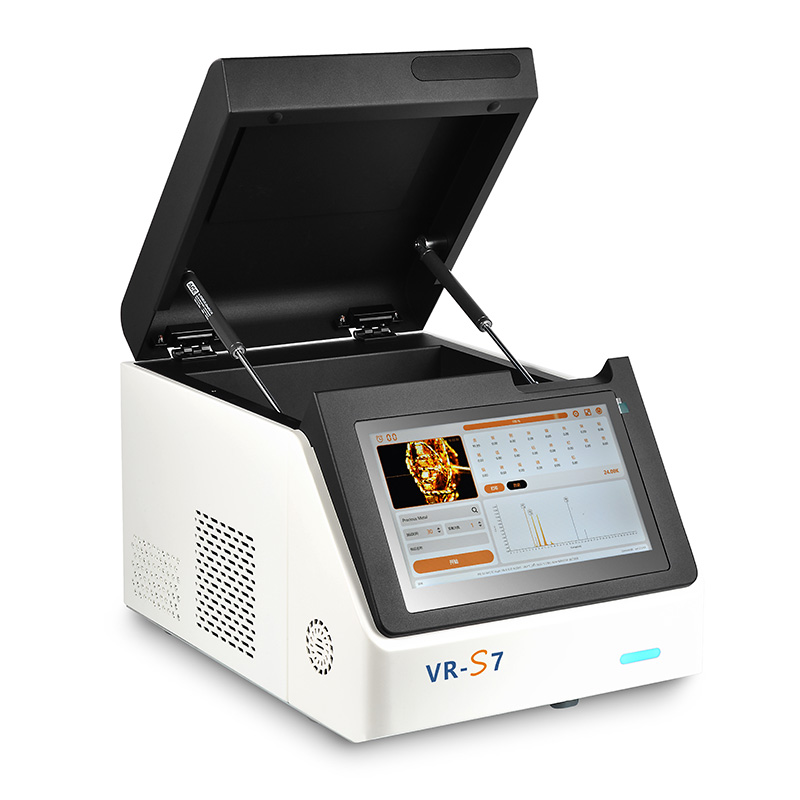
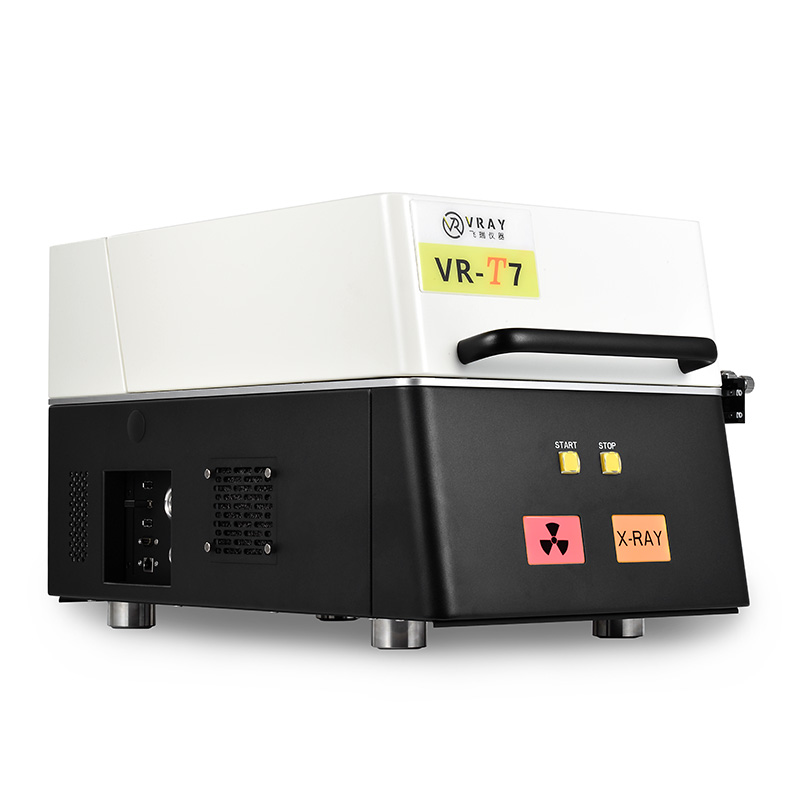
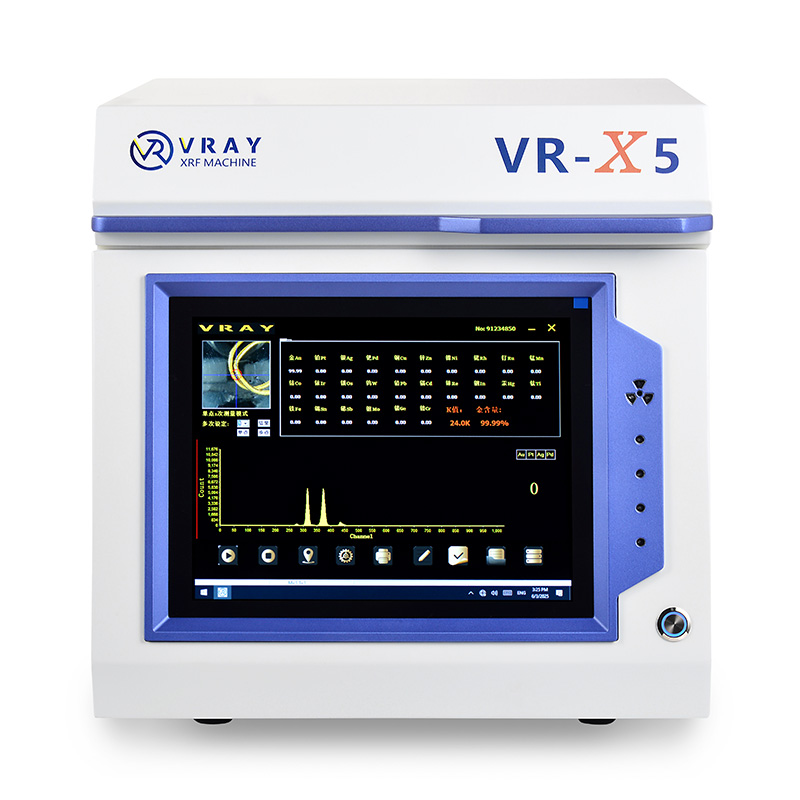
What did our happy clients say?
Our XRF gold testing machine bought from VRAY is simply outstanding! The 0.01% accuracy for 9999 gold is unmatched, and its 30-second test time is a huge boost. The 5-megapixel camera and manual XY stage (50x50mm) are incredibly precise. This machine, with its high-sensitivity SDD detector, is a game-changer for our high-volume lab. Truly a professional-grade instrument. Highly recommend!
The VRAY XRF gold testing machine we just bought is a perfect fit for our expanding recycling business. Its 0.05% accuracy for 9999 gold and ability to test solid/liquid/powder samples in just 40 seconds is phenomenal. Having an inbuilt Intel i5 computer makes it so user-friendly. Plus, the element range up to U(92) is fantastic. An essential, robust machine for serious analysis!
I'm thoroughly impressed with my new VRAY VR-S6 XRF gold testing machine mini desktop. It delivers 0.03% accuracy for 9999 gold in only 30 seconds, perfect for my busy jewelry store. The i5-1035G7 Windows 11 inbuilt computer and 11.6" touchscreen make it super modern and intuitive. The compact size is ideal. A powerful, accurate, and convenient XRF machine – strongly recommended!
Our VRAY XRF Gold Testing Machine has transformed our operations. The dedicated T-shaped radiator ensures continuous use without overheating, even during long shifts. This attention to detail, combined with its consistent accuracy, is why we chose VRAY. Their 50W micro-focused X-ray tube delivers reliable results every time. Best investment for purity testing!